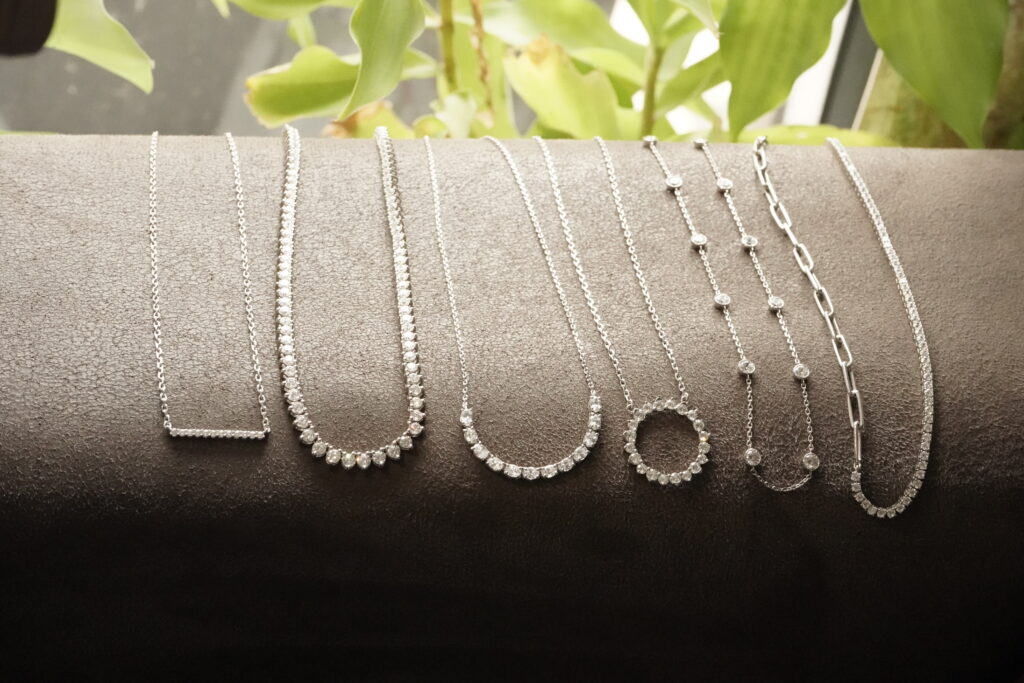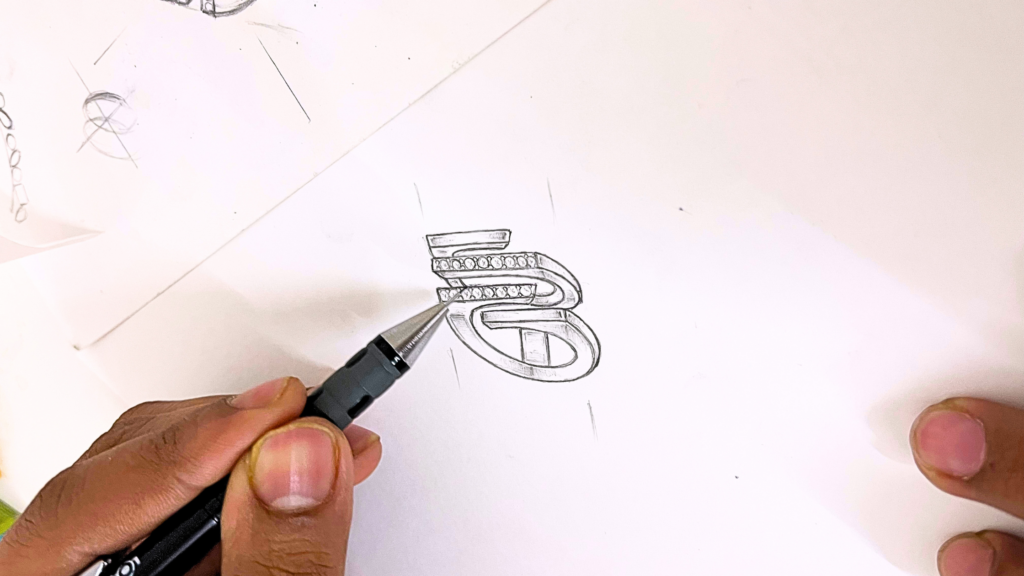The Intersection of Art and Technology: 3D CAD Jewelry Design for Artists

Introduction: Where Creativity Meets Innovation
Jewelry design has always been about passion, creativity, and craftsmanship. For centuries, artists have meticulously shaped metals, set stones, and carved intricate patterns by hand transforming raw materials into stunning pieces of wearable art.
But today, we’re standing at an exciting crossroad where traditional artistry meets cutting-edge technology. Thanks to 3D CAD (Computer-Aided Design), jewelry artists now have an incredible tool that enhances their creativity, speeds up the design process, and ensures flawless precision.
Whether you’re a seasoned jeweler looking to modernize your process or a new artist eager to explore the world of digital design, CAD technology offers limitless possibilities. And the best part? You don’t have to master complex software yourself The Cad Maker is here to bring your visions to life with high-quality 3D CAD modeling, realistic rendering, and expert sourcing, all with a lightning-fast turnaround of just 24-48 hours!
So, let’s dive deep into this fascinating world where art meets technology and discover how 3D CAD is revolutionizing jewelry design.
Jewelry as an Art Form: A Legacy of Creativity
Jewelry has never been just about adornment—it’s a form of self-expression, a statement of style, and often, a piece of history.
Artists and designers pour their heart and soul into every creation, drawing inspiration from nature, culture, architecture, and personal experiences. Every ring, pendant, or bracelet tells a story whether it’s a vintage-inspired engagement ring or a contemporary geometric design.
But while traditional handcrafting methods have their charm, they also come with challenges:
- Time consuming: Hand-sculpting intricate details can take weeks.
- Risk of errors: One small mistake can mean starting over.
- Limited flexibility: Making revisions or customizing designs can be difficult.
This is where 3D CAD technology steps in offering a way to enhance artistic creativity without compromising craftsmanship.

What is 3D CAD in Jewelry Design?
Imagine being able to sketch out your dream jewelry piece and then seeing it come to life in stunning 3D detail all before a single gemstone is set or metal is cast.
That’s exactly what 3D CAD does!
How It Works:
- Digital Blueprinting: Using CAD software, a jewelry designer creates a precise 3D model of the piece.
- Realistic Visualization: The model can be rendered into a lifelike image, showing how it will look in different materials, lighting, and angles.
- Easy Modifications: Adjustments to size, shape, or settings can be made instantly.
- 3D Printing & Casting: The final digital design can be 3D printed or cast in metal, ensuring perfect replication.
This process saves time, reduces waste, and guarantees accuracy, making it a game-changer for jewelry artists who want to push the boundaries of design.
Why Jewelry Artists Should Embrace 3D CAD
Some artists worry that CAD might take away the human touch from jewelry design but in reality, it enhances creativity rather than replacing it.
Here’s why every jewelry artist should consider incorporating 3D CAD into their process:
1. Unlimited Creative Freedom
With CAD, you’re not limited by traditional techniques. Want an intricate filigree pattern? A delicate lattice design? An impossible-to-handcraft structure? No problem!
CAD lets you dream big and design even bigger.
2. Precision Like Never Before
Symmetry and precision are critical in jewelry design. CAD ensures that every curve, prong, and stone setting is mathematically perfect, eliminating human error.
No more worrying about mismatched angles or uneven settings your design is exactly how you envisioned it.
3. Faster Design Process
Traditional jewelry-making can take weeks, even months. With CAD, designs can be completed in a matter of hours or days, allowing artists to focus on creativity rather than technical hurdles.
And if you’re working with The Cad Maker, we deliver high-quality CAD designs and renders within 24-48 hours!
4. Easy Customization & Modifications
Imagine a client loves your design but wants a slightly different band width or gemstone setting. In traditional methods, you’d have to start over but with CAD, modifications are quick and seamless.
This makes custom orders and personalized designs easier than ever!
5. Photorealistic Rendering for Clients & Marketing
One of the biggest advantages of CAD is realistic rendering. Instead of a rough sketch, you can showcase a high-definition, lifelike image of your jewelry piece helping clients visualize the final product.
This is especially valuable for online jewelry businesses, where high-quality images can make or break a sale.
How 3D CAD is Bridging the Gap Between Art and Technology
For centuries, jewelry making was an entirely handcrafted process. Jewelers would sculpt wax models by hand, engrave metals with delicate tools, and rely on years of expertise to perfect their craft. While these traditional methods are still admired and used today, they come with limitations especially when creating complex, highly detailed designs.
This is where 3D CAD (Computer-Aided Design) technology changes the game. Instead of replacing artistry, CAD acts as a bridge between creativity and precision, allowing artists to retain their unique design sensibilities while leveraging cutting-edge tools for better efficiency and accuracy.
1. Bringing Artistic Vision to Life with Digital Sculpting
One of the biggest misconceptions about CAD is that it removes the organic, handmade feel of jewelry. However, modern CAD tools now feature digital sculpting capabilities, allowing designers to mimic hand-carved textures, organic shapes, and delicate engravings.
For example, tools like ZBrush and Blender let artists sculpt digitally, just like working with wax or clay. This ensures that each design maintains its artistic charm while benefiting from CAD’s precision.
2. Overcoming the Limitations of Traditional Jewelry Making
- Complex Geometries: With CAD, artists can design intricate patterns, latticework, and complex settings that would be extremely difficult (if not impossible) to achieve by hand.
- Microscopic Precision: Every stone setting, claw prong, and filigree detail is placed with absolute accuracy, ensuring flawless execution in the final piece.
- Unlimited Experimentation: Since CAD is digital, artists can experiment freely testing different shapes, materials, and settings without fear of wasting materials.
3. Faster, Smarter, and More Efficient Workflow
Traditional jewelry making often requires multiple physical prototypes, but CAD simplifies this by offering:
- Instant modifications: Change a design in minutes instead of days.
- Virtual prototyping: See how a piece will look before it’s ever made.
- Rapid iteration: Test multiple versions of a design quickly.
This efficiency allows artists to spend more time on creativity and less time on technical hurdles.
4. Seamless Transition from Digital to Physical World
With CAD, jewelry isn’t just designed on screen it can be translated directly into 3D-printed prototypes or cast into metal with perfect accuracy.
- 3D printing technology allows jewelers to create resin or wax models for approval before final production.
- Direct-to-metal casting eliminates intermediate steps, ensuring quicker turnaround and reducing material waste.
This seamless blend of digital design and physical craftsmanship ensures that the artist’s original vision is faithfully brought to life with no compromises.
Step-by-Step: The Jewelry Design Process with 3D CAD
Understanding the jewelry design process with 3D CAD helps artists and designers create more efficiently while ensuring flawless execution. Let’s break down the process step by step:
1. Concept Sketching – The Creative Spark
Everything starts with an idea. Artists usually begin with hand-drawn sketches, mood boards, or conceptual renderings. These rough sketches provide the foundation for the CAD modeling phase.
Key Benefits of CAD at This Stage:
- The ability to digitally sketch designs before building them in 3D.
- Easy comparison between multiple ideas to choose the best one.
2. 3D CAD Modeling – The Digital Blueprint
Once the concept is finalized, it’s time to create a detailed 3D model using CAD software. This step involves:
- Defining the precise dimensions of the jewelry piece.
- Building the stone settings, metal thickness, and overall structure.
- Ensuring proportional symmetry for balance and comfort.
Software Used:
- Rhino & MatrixGold – Ideal for technical CAD modeling.
- ZBrush & Blender – Great for organic, sculpted designs.
Why CAD is a Game-Changer Here:
- You can rotate, zoom, and inspect the design from every angle.
- It’s easy to adjust details, like prong placements and band thickness.
- Digital models can be saved and reused for future designs.
3. Rendering & Visualization – Bringing the Design to Life
Once the 3D model is complete, it’s time to render it into a photorealistic image. This helps both designers and clients see exactly how the final piece will look.
What Happens in This Stage?
- Materials (gold, platinum, rose gold, etc.) and gemstones are applied digitally.
- Advanced lighting techniques create lifelike reflections and shadows.
- The render is refined to achieve a realistic, high-definition result.
Why This is Important:
- Helps clients visualize the final piece before production.
- Perfect for marketing and e-commerce, where high-quality images attract buyers.
- Allows artists to experiment with different materials and finishes before committing.
4. Prototyping & 3D Printing – Testing the Design in Real Life
Before going into final production, many designers choose to create a prototype of their design using 3D printing.
Types of Prototypes:
- Resin or Wax Models: Used for client approval and testing the design’s aesthetics.
- Metal Prototypes: Sometimes used for high-end, one-of-a-kind pieces before the final version is produced.
Why 3D Printing is Revolutionary:
- Reduces the risk of design flaws before final production.
- Ensures stone settings, band thickness, and structure are perfect.
- Allows for faster revisions, since digital files can be modified easily.
5. Casting & Production – Making the Dream a Reality
Once the prototype is approved, the final jewelry piece is cast in metal. This is where the CAD-designed model transitions from the digital world to a real, wearable masterpiece.
What Happens Here?
- The digital CAD file is used to create a casting mold.
- Molten metal is poured into the mold, forming the jewelry piece.
- Stones are set, engravings are applied, and the piece is polished to perfection.
Why This Process is Better with CAD:
- Eliminates hand-carved wax models, reducing time and labor.
- Ensures 100% precision, resulting in perfectly proportioned jewelry.
- Helps scale production for designers creating multiple pieces.
Why Work with Professional CAD Experts?
While some artists prefer to learn CAD software themselves, mastering it can take years of experience. That’s where The Cad Maker comes in.
By working with expert CAD professionals, you ensure:
- Flawless designs that are structurally sound and production-ready.
- Lifelike renderings that help market and showcase your designs.
- Fast delivery (24-48 hours!) so you can focus on your art, not technical hurdles.
The Cad Maker: Your Partner in 3D Jewelry Design
At The Cad Maker, we believe that technology should empower artists, not replace them. That’s why we offer:
- Precision 3D CAD modeling: Turning your sketches into production-ready designs.
- Photorealistic rendering: Helping you showcase your designs beautifully.
- Expert sourcing assistance: From casting to finishing, we help bring your piece to life.
- Fast turnaround (24-48 hours): Because we know your time is valuable!
Whether you’re a traditional jeweler looking to modernize or an artist exploring digital design, we’re here to help you every step of the way.
Conclusion: Where Art Meets Innovation
3D CAD technology has revolutionized jewelry design, seamlessly blending traditional artistry with modern precision. It allows designers to push creative boundaries, achieve flawless accuracy, and bring their visions to life faster than ever before. No longer limited by handcrafting constraints, artists can now create intricate, breathtaking pieces with ease.
At The Cad Maker, we help jewelry designers turn ideas into reality with expert CAD modeling, hyper-realistic rendering, and quick turnaround times. Whether you’re a seasoned jeweler or an emerging artist, our team ensures your designs are production-ready and picture-perfect.
Ready to bring your jewelry designs to life? Contact The Cad Maker today and let’s create something extraordinary!
